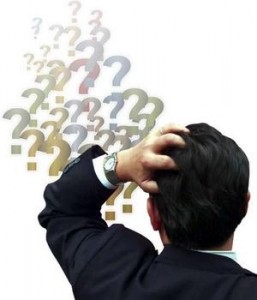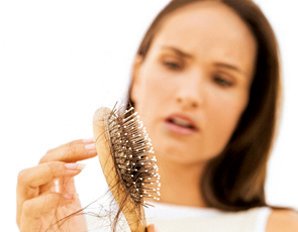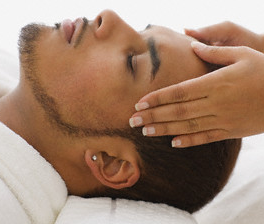Posts Tagged ‘us hair restoration’
Saturday, March 12th, 2011
Here are a few frequently asked questions we have for your general inquiry:
How do you relocate hair grafts once broken down into follicular units?
The hair grafts (or follicular units) are transplanted based on the individual needs of the patient. The doctor will draw the hairline at your initial consult and right before the procedure and discuss it in detail with the patient. Designing the hairline has to do with the degree of baldness in each area of the scalp and the patients’ preference.
How are the hair grafts placed?
The follicular units must be immersed in a special solution in cold temperature once they are taken from body. When the sites are completed by the surgeon, the hair technician will gently insert the grafts one at a time. This is a very meticulous process and typically takes a few hours.
Does Dr. Mohebi perform the hair transplant surgery himself?
All surgeries are performed by Dr. Mohebi. He will get assistance from a surgical team of hair technicians during dissection and implantation of the follicular unit grafts.
Am I put under sedation while I get the procedure?
You will be put under sedation during the procedure but you will still be conscious. You will become more alert and aware as the surgery goes on, in which you will be sitting in an upright position in a surgical chair most of the time. You can watch a movie, read a book, listen to music or you can sleep (if you choose to) during your hair transplant surgery.
How long before the transplanted area doesn’t look like a procedure has been done?
Redness and swelling after hair restoration surgery is not uncommon and may last a few days following the procedure. Most patients generally recover from surgical swelling and redness after day 4 or 5. A loose fitting hat can be worn to prevent direct sunlight, which will protect the grafts and also keep your swelling or redness from being seen by others, if that is your concern.
Where can I find before and after photos of Dr. Mohebis’ work?
Before and after photos as well as video testimonials of previous hair transplant patients can be found at our facebook page: http://www.facebook.com/home.php#!/pages/US-Hair-Restoration/148987321796051, which we will keep updated as much as possible on a regular basis.
Tags: after hair restoration surgery, after hair transplant, before and after photos, care after hair transplant, Dr. Mohebi, hair line, hair transplant, hair transplant surgery, us hair restoration
Posted in after hair transplant, hair transplant, Hair Transplant Procedure, Video | No Comments »
Friday, March 4th, 2011
 Many patients that come in to my office have a common complaint; hair shedding (some even bring in a ball of hair they have collected from their brush and bathroom floor) and in most cases they are women with long hair. For the most part hair shedding alone is not a sign of hair loss. Shedding is losing thick hair that has completed its growth phase and started its resting phase. Many patients that come in to my office have a common complaint; hair shedding (some even bring in a ball of hair they have collected from their brush and bathroom floor) and in most cases they are women with long hair. For the most part hair shedding alone is not a sign of hair loss. Shedding is losing thick hair that has completed its growth phase and started its resting phase.
- Examples of Normal Hair Shedding
All humans experience a level of hair shedding. It can be up to 100 to 200 hairs per day. Hair shedding is sometimes more exaggerated in people who have had a large surgery, trauma, experienced physiological or emotionally stressful events and women who have recently delivered a child. This is called Telogen Effluvium (excessive temporary loss of telogen hair). In most cases hair shedding is typically temporary and the affected hair will grow back within a few months. There is no cause for concern, unless you have a more visible scalp or thinning of the scalp hair. In which case, you should come in to see a certified hair restoration surgeon.
- The 3 Stages of Human Hair Growth
- Anagen ( Growing stage)
- Catagen (Transitional stage)
- Telogen ( Resting stage)
- Active Hair Loss Determined by Miniaturization Study
Almost every patient that visits US Hair Restoration will have a miniaturization study performed on them, to evaluate their degree of the fineness of their scalp hair which are signs of active hair loss, or in other words scalp hair miniaturization. People with active hair loss show 20-30% more thinning hair than the average person who experiences normal hair shedding. If you feel that you are experiencing active hair loss, we recommend you come into one of our five offices in California( San Francisco, San Diego, Orange County, Beverly Hills and Encino), for a free consultation.
Tags: active hair loss, free consultation, hair growth, hair loss, miniaturization study, normal hair shedding, resting phase, scalp hair miniaturization, telogen efflevium, us hair restoration
Posted in Beverly Hills hair transplant, California hair transplant, Orange County hair transplant, San Diego hair restoration, San Francisco Hair Transplant, Uncategorized, women hair loss | No Comments »
Tuesday, September 15th, 2009

As with any surgical procedure, you would have to worry about certain side effects or tedious maintenance. We are asked by every potential surgical patient, “When can I go back to work after my hair transplant surgery?”
Downtime doesn’t only apply to the amount of time you would spend away from your office or how soon you can return. This all depends on the type of work that you do, whether or not you can use a hat, how sensitive the issue of your hair transplant is and whether or not you want to keep it a secret.
We have a few follow up dates after the hair transplant surgery in our California Hair Transplant Offices and each must be completed. On the day after surgery, all patients must have a hair wash done in office to best instruct the patient. We make sure to clean the patient as thoroughly as possible without damaging the hair grafts in a professional and comfortable manner. We make sure the patient understands that scabbing and redness must be dealt with as soon as possible.
Patients are most concerned about how they will look the first few days. Redness and swelling are the most common side effect of the surgery and can last 4-5 days after the surgery. Patients can choose to wear a hat to cover the transplanted area from plain site.
On larger hair transplant cases, the swelling may actually progress to the eyebrow area or even the eyelids and under eyes. 5 to 6 days is all it should take for this kind of swelling to go down, generally. The swelling is most always triggered by large (2500 graft surgery) or mega-session (3000+ graft surgery) procedures but is almost undetectable on smaller cases.
The final concern or issue after hair transplant surgery is the visual aspect of the existing hair. Most cases, we trim the hair in both the recipient and donor area (0.5 to 2cm) and it will stay at about that length for 2 to 3 weeks. In about 90% of patients that undergo surgery, the transplant hair will fall out within the first 3 weeks. This means will look like they did before hair transplant surgery. By this point, there should not be any swelling or redness. Staples and/ or sutures are removed in less than 2 weeks after surgery and the transplanted hair follicles will then go into their resting phase until they are ready to grow again.
Tags: after hair restoration surgery, after hair transplant, complications, hair transplant, hair transplant surgery, high grade baldness, Los Angeles Hair Transplant Center, low grade baldness, male patterned hairloss, men hair loss, redness after hair transplant, swelling after hair transplant, us hair restoration
Posted in California hair transplant, hair transplant | No Comments »
Tuesday, September 8th, 2009

We understand people like to pamper themselves. A patient of ours wrote to us regarding a scalp and body massage. He had his hair transplant surgery in our Encino Surgical Office almost 8 months ago and asked, “Would get a head massage risk loosening the implants?” He also wanted to know if that would help increase circulation to the grafts and improve growth.
Hair that has been transplanted over 3 months ago and is growing normally is considered permanent and cannot be dislodged from your scalp. The main concern is in the first weeks of a hair transplant surgery when the hair is still settling in. Even so, some cases where the hair is removed the active part of the follicle may still remain and a new follicle will grow shortly after. At this point, hair cannot be harmed.
However, there is no proof that a scalp massage to increase scalp circulation is proven to increase the quality of existing or newly transplanted hair. More so, it has also not been proven that lack of blood circulation or oxygenation in scalp will cause hair loss.
Tags: after hair transplant, complications, Encino hair transplant, hair loss treatment, hair transplant surgeon, hair transplant surgery, hair transplatation, male patterned hairloss, men hair loss, scalp massage, scalp massage after hair transplant, us hair restoration
Posted in Uncategorized | No Comments »
Sunday, January 4th, 2009
Happy New Year from US Hair Restoration
I would like to wish you all a Happy New Year! Last year was a year of great achievements for our hair restoration offices in Orange County and Los Angeles area in Southern California. We are pleased to announce that we continued our research in hair loss treatment and hair restoration and were active at the medical meetings at an international level. I am proud that our articles on hair restoration were published on Hair Transplant Forum, the most prestigious journal of hair restoration surgery.
Our last two articles, Psychology of Hair Transplants and How to assess scalp laxity, were published on hair transplant forum international, both on the cover of the magazine within the last year. I have to be thankful for Dr. William Rassman and Dr. Jae Pack who assisted me with our studies and our invention: Laxometer.
My presentation at annual meeting of International Society of Hair Restoration Surgery (ISHRS) on Psycho-social impacts of hair restoration surgery on men was well received. Our new intention, Laxometer is being developed and I hope that it will be mass produced to be used in hair restoration field. Laxometer is a device that can help hair transplant surgeons to increase their precision in harvesting hair and making hair transplant a safer procedure for patients.
Adjacent to our accomplishments in hair restoration research and development, we have expanded our Medical Spa to provide a lot more cosmetic procedures to our patients under one roof. Our Encino, Beverly Hills and Orange County hair transplant offices facilitated the access of our patients to our quality services especially for the residents or Southern California. We also provided a great travel package for the patients who traveled from other states or other Countries to take advantage of our quality services. I need to thank our office staff and medical assistants for coordinating this process to make our procedures as smooth and pleasant as possible.
We all know that last year has been a challenging year for America and other countries financially. We at US Hair Restoration achieved reducing the rates of our procedures while maintaining a very high standard. We offered a variety of low rates and 0% interest finances for qualified patients to make our hair transplant procedures more affordable.
I am thrilled that I found many great friends during last year, individuals who I admire for their willingness to become a better person inside and out. I am grateful for my colleagues for not keeping it a secret and introduced their patients and friends to us. I also have to thank our previous patients who did not stop bragging about their new look after their hair restoration procedure with us.
Have a great New Year,
Parsa Mohebi, MD
Medical Director
US Hair Restoration
US Hair Transplant centers and USHR Med Spa
Tags: Announcements, Inventions, laxometer, Medical Spa, MedSpa, New Year, News, Parsa Mohebi, staff, us hair restoration, USHR, USHR Med Spa
Posted in men hair restoration, Newport Beach hair transplant, Orange County hair transplant | No Comments »
|
|




